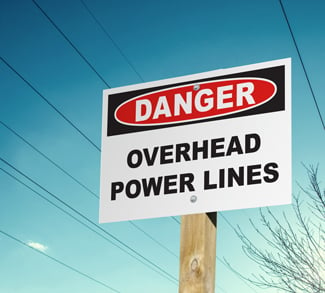Resource Navigation
Energize Workplace Electrical Safety Plans
03
February,
2023
2 MINUTE READ

The increase of electric shock drownings and injuries from overhead power lines are this year's campaign focus by the Electrical Safety Foundation International (ESFI) for National Electrical Safety Month. Each May, ESFI aims to encourage and support employers, utilities, and others to expand efforts in electrical safety. ESFI explains the importance of electrical code compliance, the hazard of electric shock drowning, testing for electrical safety, and overhead power line safety. It also reminds workplaces to focus on electrical safety during natural disasters. Workers can benefit from an array of hazard prevention methods that include continuous training and communication.
Workplace Electrical Hazards
In association with the National Fire Prevention Association, ESFI says it seeks to reduce workplace accidents and fatalities by promoting electrical safety. Currently, only 17 states require compliance with the most recent (2017) edition of the National Electrical Code (NEC). "The NEC is updated every three years to include the latest in proven safety technology, and ESFI is committed to educating the public about the importance of staying up to code," said Brett Brenner, ESFI president.
 Besides compliance, ESFI says this month it is important to focus on mitigating the hazards in electric safety during natural disasters by preparing for emergencies and disasters using safety best practices. The injuries associated with electricity are vast. There are about 70 electrocution fatalities associated with consumer products each year, ESFI reports. In industry, 53% of electrical fatalities in 2016 were in the construction industry. In industries that work around water, such as marinas and pools, there are at least several cases per year involving electric shock drowning.
Besides compliance, ESFI says this month it is important to focus on mitigating the hazards in electric safety during natural disasters by preparing for emergencies and disasters using safety best practices. The injuries associated with electricity are vast. There are about 70 electrocution fatalities associated with consumer products each year, ESFI reports. In industry, 53% of electrical fatalities in 2016 were in the construction industry. In industries that work around water, such as marinas and pools, there are at least several cases per year involving electric shock drowning.
Telecommunications and electrical line workers have a higher rate of injuries and illnesses than the national average. According to the Bureau of Labor and Statistics, construction site workers, including telecommunication and electric power-line installers, are the main professionals that encounter hazards with overhead power lines. There are several safety procedures that can minimize dangers, such as proper ladder safety and wearing proper safety equipment before entering spaces such as manholes. When workers have to go to great heights for line installations or repairs on poles or towers, employ fall protection. Develop clear, custom visual communication that alert employees to height-related dangers and provide necessary information for working at elevated heights. ESFI also reminds employers to use equipment and products that have certification from Nationally Recognized Testing Laboratories and to routinely test fault currents.
Promote Electrical Safety
Employers and managers can take National Electrical Safety Month as an opportunity to increase worker awareness of workplace electrical hazards. Promote electrical safety by looking to adopt the most recent codes and standards, which protect workers with the latest advancements in safety technology. Electrical safety awareness and education among employers can prevent electrical fires, injuries, and fatalities. Reduce the danger for line workers by improving safety procedures and utilizing continuous training.
RELATED RESOURCES

Electronic Hazardous Waste Reporting System Begins
To make the tracking process of hazardous waste more progressive and efficient, the EPA has begun ...
Read
NIOSH Digs Into Electrical Safety in Mining
To help solve mining work safety and health challenges, NIOSH continually researches best practices through ...
Read
Tech, Safety Power-Drive Mining Changes
Mining is changing mostly because of new tech and safety improvements, which are power driving profits and ...
Read.png)


